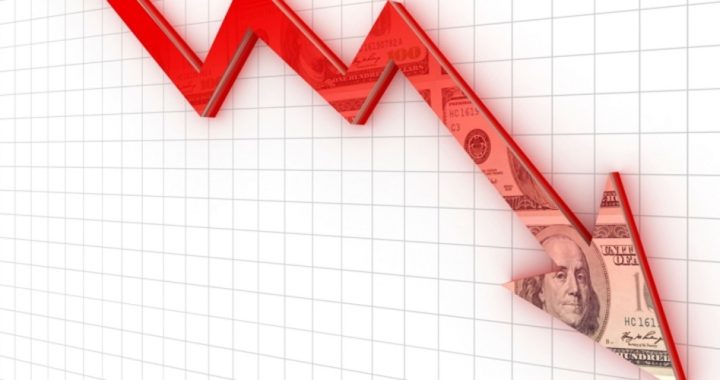
Markit Ltd., the London-based global financial information behemoth, issued an early warning about signs of the coming recession in late February when it published its services purchasing managers’ index. It went negative for the first time in more than two years. At the time, Chris Williamson, Markit’s chief economist, said: “[Our report shows] a significant risk of the US economy falling into contraction in the first quarter [of 2016]”, adding, “Slumping business confidence and an increased downturn in order … backlogs suggest there’s worse to come. Any bounce-back from the weather may therefore prove to be only a temporary improvement in a steady downward trend of business conditions.”
Two weeks later, Markit published its global surveys which showed worldwide business activity sinking to its lowest level since October 2012. This included data from both emerging markets and developed countries. Included in that global analysis was this, pointed specifically at the United States: “Markit’s US PMI [purchasing managers’ Index] by both manufacturing and services fell sharply again in February … [which] meant that February was the second-worst month since the [start of] the global financial crisis.”
On Tuesday, data published by the Federal Reserve Bank of St. Louis, the Fed’s “statistical center,” confirmed what Markit was saying. Nine charts providing snapshots of various parts of the U.S. economy provided reasons for concern.
The first was student loans, showing that in the first quarter of 2009, student loans stood at $146.6 billion. By the fourth quarter of 2015, that number was $945.6 billion, a staggering six-fold increase.
This was reflected in the second chart: home-ownership rates. That index has declined in almost a straight line since the collapse of the substandard real estate market in 2007 and now stands at a 48-year low. This reflects middle-class workers, laboring under student loan payments, being unable to put aside enough to provide even a modest down payment on a new home. Even if they were able to, banks look at their staggering debt load and, more often than not, turn them down.
The federal SNAP (Supplemental Nutrition Assistance Program), formerly known as Food Stamps, has increased by 26 percent from 2009 through 2014, during the time when the economy was supposedly recovering from the Great Recession.
Federal debt has exploded as well, jumping more than 70 percent since the start of President Obama’s first term to a staggering $18.9 trillion, projected to exceed $20 trillion by the end of his second.
The Federal Reserve, in its insistence that cheap money would revive the moribund economy, has increased total monetary reserves (cash, coin, and credit) by a mind-bending 125 percent, with the Fed now carrying $4 trillion of the new money that it has created on its balance sheet.
As money gets cheaper, prices go up, but nothing like the increase in healthcare costs. The Consumer Price Index (CPI) for medical care services, since the passage of Obama’s so-called Affordable Care Act in 2009, has ballooned by 25 percent, with increases in health insurance premiums to be announced later this year adding to the pain.
During the “recovery,” real (inflation-adjusted) median family incomes have declined by nearly seven percent since 2007, along with a decline in the labor force participation rate. This flies in the face of the numbers offered by the government’s Bureau of Labor Statistics (BLS), about which John Williams of Shadow Stats had this to say:
The broad economic outlook has not changed, despite the heavily-distorted numbers that continue to be published by the BLS. The unemployment rates have not dropped from peak levels [as reported by the BLS] due to a surge in hiring; instead, they have generally dropped because of discouraged workers being eliminated from [the BLS’s] accounting.
One unvarnished statistic comes, surprisingly, from the China Containerized Freight Index (CCFI), which tracks real-world market rates for shipping containers from major Chinese ports to 14 regions around the world. Last week, the CCFI dropped by 4.1 percent to its lowest level ever recorded.
Seemingly oblivious to the obvious, stock investors have pushed the S&P 500 Index to within shouting distance of its high reached late last year, causing many talking heads to conclude that its recent precipitous decline was just a temporary blip in the seven-year-long bull market in stocks. Pulling back to a three-year chart of that index, however, reveals what Harry Dent, author of The Great Crash Ahead, calls a “rounded top” formation. Such a formation, says Dent, is a tip-off that the present market rally is a false rebound and that the real peak hit last May was the top and the end of that long bull-market run.
Taken together, these voices appear to be announcing the start of the next recession not only in the United States but around the globe.
A graduate of an Ivy League school and a former investment advisor, Bob is a regular contributor to The New American magazine and blogs frequently at LightFromTheRight.com, primarily on economics and politics. He can be reached at [email protected].



